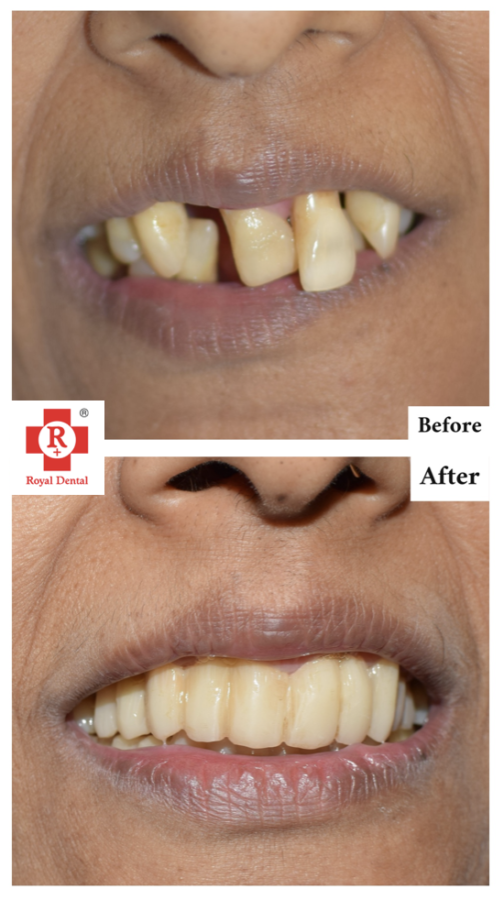A root canal is a treatment to repair and save a badly damaged or infected tooth instead of removing it. The term “root canal” comes from the cleaning of the canals inside a tooth’s root. Decades ago, it is treatments often were painful. With dental advances and local anesthetics, most people have little if any pain during a root canal. In fact, it’s probably more painful living with a decayed tooth. It is alternative include extracting the damaged tooth, no further treatment, or replacing the tooth with a dental implant, bridge, or removable partial denture.
What is a root canal?
A root canal is a procedure that treats diseased or infected pulp tissue inside your tooth’s root. The pulp is essential for a tooth’s survival: it helps to keep the tooth healthy by producing proteins that fight off bacteria in the mouth. When the pulp becomes infected or diseased, root canal treatment is needed to save the tooth from dying.

The most common reason for a root canal is tooth decay, which leads to an infection in the pulp tissue. Once the pulp becomes infected, it’s usually too late to save the tooth without root canal treatment. Pulp infections can also be caused by other health conditions, including gingivitis, periodontitis, or a dental fracture.
Why do you need a root canal?
Root canals are often the only option for saving a tooth that’s been severely damaged by infection. Other procedures may be possible, but they’re less effective or less predictable in outcome. Before you’re treated for a root canal, your dentist will try to identify the cause of the infection and prescribe a treatment plan that’s appropriate for your situation. Your dentist may also recommend that you see a periodontist or oral surgeon for a second opinion.
Root canals are necessary when the pulp has been irreversibly damaged by infection, such as after a tooth fracture or if you have very advanced gum disease. When a tooth’s pulp becomes irreversibly infected, it has to be removed to prevent the infection from spreading. If the infected pulp is left in the tooth, it can lead to a very painful infection called “dry socket”.
Risks of getting a Root Canal procedure
While root canals are generally safe, they do carry some risks. These include infection, tooth decay, and gum disease. Infection risk is minimal when the procedure is performed by a qualified dentist, but it’s important to avoid teeth cleaning that could dislodge the sealant inside the root canal.
Root canals can also cause tooth decay, especially in areas that have been treated for decay before. This is because, when the tooth is infected, it loses minerals and becomes softer. Gum disease can also be worsened by this procedure if the patient isn’t diligent about their oral hygiene during the healing process.
When should you get a root canal treatment?
If you’ve had pain in your tooth for longer than a few days, and it isn’t getting better, it’s a good idea to schedule an appointment with your dentist. The sooner you identify and treat an infection, the better the outcome will be. If your dentist doesn’t recommend a root canal, you should seek a second opinion. It’s can be a daunting concept, and many people have misconceptions about them. By getting a second opinion, you can better understand what the procedure entails, and what your other treatment options are.
Full Mouth Root Canal Treatment

Step 1: On your first visit, you will provided a case paper. You must fill your Name, Age, Gender, Address and Occupation details & hand it over back to the receptionist.
Step 2: You inquired a number of questions by the attending dental surgeon and your case history would be recorded. Even though the attendant knows of your allergies, you should once again inform the attendant about any allergies.
Step 3: You examined and all necessary details for treatment planning will be recorded.
Step 4: In most cases, an OPG or CBCT or RVG X-ray investigation taken with all details before your final Consultation.
Root Canal with SAPTeeth Dental Crown

Step 5: You explained possible treatment options and plans with advantages and disadvantages. You have the liberty to ask as many relevant questions as you want. Treatment plans written down on the case paper and given to you.
Step 6: As a confirmation of your acceptance to the Terms and Conditions; you may sign the case paper and retain a copy with you at all times. At this stage you require to pay consultancy charges of INR 1500 or 25 US$.
Step 7: Impression of single or both jaws may be taken. On your request we shall proceed with the plans discussed and agreed by you.
Step 8: Immediately within 2-5 minutes your model preparation would begin and in about 30 minutes your teeth model would be ready. Thereafter, your model would be scanned and a computer image of the model fed into the CAD machine for your digital teeth design.
Smile Makeover with Dewntal Crowns

Step 9: Within about 30-60 minutes your design would be ready and sent for machining. The CAM machine would prepare your final teeth in about 10-15 min per tooth. Simultaneously your upper and lower jaw teeth can prepared in multiple CAM machines which would reduce the net time to 50%.
tep 10: While your teeth preparation is on, you may feel comfortable in a waiting room with your relative and refreshments.
Step 11: Thereafter; the area to be operated is locally anaesthetised to give numbness during surgery/operation. If you are going for root canal treatment; depending upon the severity of pulp infection it may become necessary to take certain precautionary steps. This would help prevent any post-operative sensitivity or pain.
Step 12: In most cases, your final restoration is fixed on the same day or the next day. In some cases the fixation may be scheduled for some other day.
Conclusion
Root canals are a common dental procedure used to treat a damaged or infected tooth. Although they can be a very effective treatment option, they don’t come without risks. If you have severe pain in your tooth and it isn’t improving, it’s important to visit the dentist. You can relieve some of the pain and help the infection to heal by ensuring you’re practicing good oral hygiene. Knowing what a root canal is and how it works can help you make an informed decision about your treatment options. Getting a isn’t a pleasant experience, but it’s almost always better than the alternative.
Follow Us For More Updates





